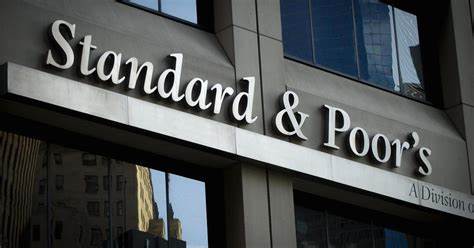Cairo 11 April 2025:
S&P Global Ratings has revised its outlook on Egypt’s economy from positive to stable, while affirming its ’B-/B’ sovereign ratings. The change, announced on April 11, 2025, reflects Egypt’s ongoing susceptibility to global financial market challenges, despite significant reforms undertaken since March 2024.
Egypt’s high interest-to-government revenue burdens and external accounts’ vulnerability to global financing conditions have contributed to this revision. The nation’s elevated external and domestic financing requirements make it particularly susceptible to global financial market headwinds.
The stable outlook is a balance between Egypt’s commitment to fiscal and economic reforms and its vulnerability to potentially volatile external financing conditions due to lower global growth. The ratings could be raised if Egypt’s net government or external debt positions improve faster than currently expected, possibly through a combination of higher foreign direct investment (FDI), state asset sales, and solid growth.
However, a revision to a negative outlook could occur if the authorities’ commitment to macroeconomic reform wanes or if economic imbalances, such as foreign currency shortages, rebuild. A negative rating action could also be taken if current geopolitical and tariff-related tensions impinge on Egypt’s external market access and cost of debt.
On April 2, 2025, the U.S. government imposed new import tariffs on goods from almost all countries, causing significant volatility in global markets. Given Egypt’s fiscal and external deficits, elevated borrowing requirements, and high cost of debt, this global shock led S&P Global Ratings to revise Egypt’s ’B-’ long-term sovereign credit ratings to stable from positive.
Egypt has implemented a series of reforms since liberalizing its exchange rate regime in March 2024. Over the last year, the foreign currency market has largely been driven by market forces, supporting competitiveness and an improvement in economic growth. Large inflows of FDI, state asset sales, and solid growth have boosted foreign currency reserves and banking sector external assets.
The U.S. imposed a 10% minimum tariff rate on Egyptian exports to the U.S. However, Egypt’s goods export exposure to the U.S. is relatively low, accounting for less than 6% of goods exports and less than 0.5% of GDP. The tariffs could impact the export of U.S.-bound goods including textiles, carpets, iron and steel, vegetables, and glass, but remain a small portion of Egypt’s overall exports.
Egypt’s real economic growth slowed to 2.4% in fiscal 2024 due to limited foreign currency availability and high inflation. However, growth is forecast to average 4.1% per year in fiscal 2025 to fiscal 2028. Major drivers of this growth are likely to be domestic demand, construction, tourism, information technology and communications, wholesale and retail trade, agriculture, and health care.
Regional tensions have risen sharply in recent weeks, with Israeli armed forces re-entering Gaza and U.S. military action against Houthi rebels in Yemen leading to renewed Houthi threats to ships planning to use the Suez Canal. Egypt has stated it will continue to remain outside the conflict and continue its mediating and humanitarian role.
Inflationary pressures began to ease in early 2025, with inflation expected to fall to 22% in fiscal year 2025 and average 15% over fiscal 2025-2028, after averaging 34% in fiscal 2024. Egypt’s current account deficit widened significantly in fiscal 2024, and is expected to remain large in fiscal 2025. However, it is expected to narrow gradually from fiscal 2026 as imports pick up thanks to the more competitive exchange rate.
Following the March 2024 exchange-rate liberalization, the IMF announced an increase in the size of its existing lending program to Egypt to about $8 billion, as well as an extension to 2026. Egypt also benefited from more than $10 billion in additional funding from other multilateral donors.
espite the reform momentum and supportive financing, the government’s high debt-servicing costs remain a vulnerability. However, Egypt’s deep domestic financial sector remains a keen buyer of government issuance, supported by strong deposit growth. Egypt’s current account balance is expected to narrow gradually over the period to 2028, and the nation’s net external debt is expected to average about 100% of current account receipts over the same period.











